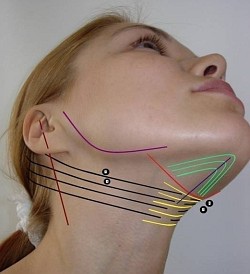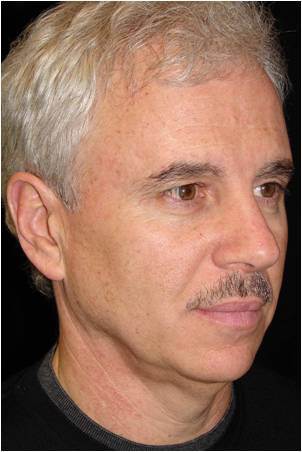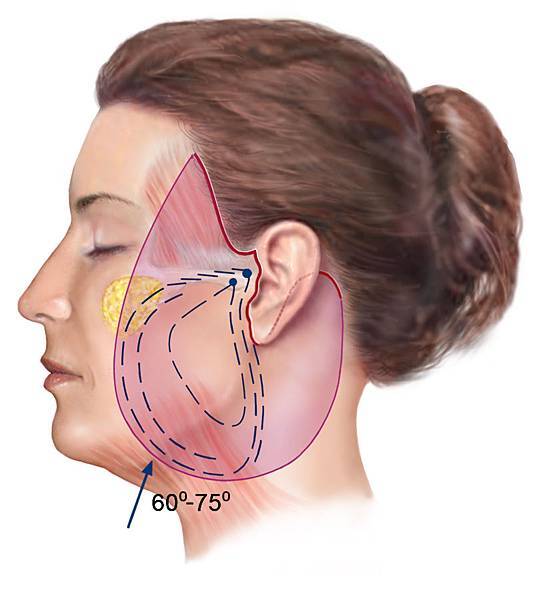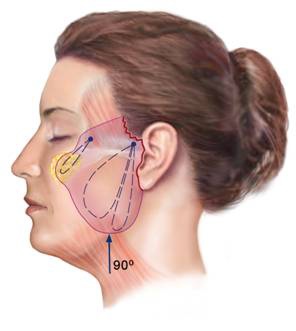 25歲膠原蛋白流失高峰輕熟齡垂垮警訊
25歲膠原蛋白流失高峰輕熟齡垂垮警訊
Charlie 發表在 痞客邦 留言(1) 人氣(185)
 頸部回春方法多拉皮手術較有效
【記者蘇湘雲/台北報導】 | 台灣新生報 – 2014年11月14日
頸部回春方法多拉皮手術較有效
【記者蘇湘雲/台北報導】 | 台灣新生報 – 2014年11月14日Charlie 發表在 痞客邦 留言(0) 人氣(118)
 整形膠立大功拉皮恢復期減半
作者:台北訊 | 中時電子報 – 2014年7月14日
整形膠立大功拉皮恢復期減半
作者:台北訊 | 中時電子報 – 2014年7月14日Charlie 發表在 痞客邦 留言(0) 人氣(47)
 QuickLift™:Separating Fact From Fiction In Less Invasive Facelift Surgery(3)
COMPLICATIONS:I often tell my patients that there is no real comfort in numbers because even if there is a 1or 2 percent chance of a certain complication, it is 100 percent if it happens to you. The reality of that is often difficult for the patient to understand. It is human nature to want to blame something or someone for a problem. However, with the complexity of the human body and the healing variables there within, complications WILL occur. It is not a subject that is typically dwelled on by patient or the doctor, since the chances of a significant complication are rare, but it is part of the patient’s decision and should be discussed before surgery.
QuickLift™:Separating Fact From Fiction In Less Invasive Facelift Surgery(3)
COMPLICATIONS:I often tell my patients that there is no real comfort in numbers because even if there is a 1or 2 percent chance of a certain complication, it is 100 percent if it happens to you. The reality of that is often difficult for the patient to understand. It is human nature to want to blame something or someone for a problem. However, with the complexity of the human body and the healing variables there within, complications WILL occur. It is not a subject that is typically dwelled on by patient or the doctor, since the chances of a significant complication are rare, but it is part of the patient’s decision and should be discussed before surgery.Charlie 發表在 痞客邦 留言(0) 人氣(23)
 QuickLift™:Separating Fact From Fiction In Less Invasive Facelift Surgery(2)
We joke that gravity catches up with us. Like many jokes, there is truth in this one. As we age, we begin to sag at the jowls and around the eyes. The face we present to the world reflects less and less how we feel on the inside, the older we become.
This visible process of aging is more pronounced for women, who typically have thinner skin than men. It is not an old wife’s tale that women appear to age more quickly than men. It is scientific fact. In the first five years of menopause, for example, women’s skin accelerates from 1 percent annual loss in tonal quality to 6 percent a year, or 30 percent loss in those five years alone. After the first five years of menopause, the rate of decrease continues at 2.1 percent a year for women. While the changes for women may be more dramatic at first, the same aging process catches up with men, which is why 15-20 percent of all facelift patients today are men.
QuickLift™:Separating Fact From Fiction In Less Invasive Facelift Surgery(2)
We joke that gravity catches up with us. Like many jokes, there is truth in this one. As we age, we begin to sag at the jowls and around the eyes. The face we present to the world reflects less and less how we feel on the inside, the older we become.
This visible process of aging is more pronounced for women, who typically have thinner skin than men. It is not an old wife’s tale that women appear to age more quickly than men. It is scientific fact. In the first five years of menopause, for example, women’s skin accelerates from 1 percent annual loss in tonal quality to 6 percent a year, or 30 percent loss in those five years alone. After the first five years of menopause, the rate of decrease continues at 2.1 percent a year for women. While the changes for women may be more dramatic at first, the same aging process catches up with men, which is why 15-20 percent of all facelift patients today are men.Charlie 發表在 痞客邦 留言(0) 人氣(12)
Charlie 發表在 痞客邦 留言(0) 人氣(15)
The Long-term Results of Purse-string Facelifts(5)
Conclusion
Over the years, I have tried to focus more on the perspective of my patients and less on my own. I now more clearly understand not only their physical appearance objectives, but also their concerns of risk, down time and cost; as well as their overall interest in an easier, less complicated experience. These desires have led me and other surgeons to develop procedures that are less invasive.
Charlie 發表在 痞客邦 留言(0) 人氣(5)
 The Long-term Results of Purse-string Facelifts(4)
The QuickLift, like any other cosmetic procedure, is not a cookie-cutter solution. It must be applied differently to address each patient’s unique situation. Patient outcomes, as with every facelift procedure, will vary due to all of the physical characteristics mentioned, and those specific to the patient’s healing and intrinsic skin qualities.
Over the last six years, I have performed more than 1,800 QuickLift procedures. It has been my observation that the procedure produces consistent, long-term results (see figures 4a-b, 5a-b, 6a-b). I have also found that after the initial six to twelve month postoperative period, when virtually all of the expected skin relaxation has occurred, any further appearance changes are actually due to the normal aging process and not procedure shortcomings.
The Long-term Results of Purse-string Facelifts(4)
The QuickLift, like any other cosmetic procedure, is not a cookie-cutter solution. It must be applied differently to address each patient’s unique situation. Patient outcomes, as with every facelift procedure, will vary due to all of the physical characteristics mentioned, and those specific to the patient’s healing and intrinsic skin qualities.
Over the last six years, I have performed more than 1,800 QuickLift procedures. It has been my observation that the procedure produces consistent, long-term results (see figures 4a-b, 5a-b, 6a-b). I have also found that after the initial six to twelve month postoperative period, when virtually all of the expected skin relaxation has occurred, any further appearance changes are actually due to the normal aging process and not procedure shortcomings.Charlie 發表在 痞客邦 留言(0) 人氣(4)
 The Long-term Results of Purse-string Facelifts(3)
In the first 22 years of my career, I performed traditional superficial and deeper plane facelifts with results that I felt were good, but with complication and morbidity rates that were sometimes not acceptable.
In 1999, I heard Dr. Ziya Saylan present a lecture on the S-lift and started performing this technique on a select few patients with moderate, but encouraging results. I found that this technique worked well on patients in their forties, but for women who were post-menopausal (age 50 plus) the technique lacked the long-lasting improvement in the jowl and neck region that I and my patients sought. I felt that the 30 to 45 degree backward vector of the purse-string, insufficient undermining, and inferior platysmal tightening caused this result.
The Long-term Results of Purse-string Facelifts(3)
In the first 22 years of my career, I performed traditional superficial and deeper plane facelifts with results that I felt were good, but with complication and morbidity rates that were sometimes not acceptable.
In 1999, I heard Dr. Ziya Saylan present a lecture on the S-lift and started performing this technique on a select few patients with moderate, but encouraging results. I found that this technique worked well on patients in their forties, but for women who were post-menopausal (age 50 plus) the technique lacked the long-lasting improvement in the jowl and neck region that I and my patients sought. I felt that the 30 to 45 degree backward vector of the purse-string, insufficient undermining, and inferior platysmal tightening caused this result.Charlie 發表在 痞客邦 留言(0) 人氣(12)
 The Long-term Results of Purse-string Facelifts(2)
The Procedures
Purse-string sutures are firmly anchored at either the zygomatic arch (S-lift and QuickLift) or at the temporalis fascia (MACS lift). The S-lift and the MACS lift use an O-shaped and a U-shaped purse-string. The MACS lift in some cases uses a third suspension purse-string to elevate the malar fat pad.
The Long-term Results of Purse-string Facelifts(2)
The Procedures
Purse-string sutures are firmly anchored at either the zygomatic arch (S-lift and QuickLift) or at the temporalis fascia (MACS lift). The S-lift and the MACS lift use an O-shaped and a U-shaped purse-string. The MACS lift in some cases uses a third suspension purse-string to elevate the malar fat pad.Charlie 發表在 痞客邦 留言(0) 人氣(14)




 QuickLift™:Separating Fact From Fiction In Less Invasive Facelift Surgery(3)
QuickLift™:Separating Fact From Fiction In Less Invasive Facelift Surgery(3) QuickLift™:Separating Fact From Fiction In Less Invasive Facelift Surgery(2)
QuickLift™:Separating Fact From Fiction In Less Invasive Facelift Surgery(2) QuickLift™:Separating Fact From Fiction In Less Invasive Facelift Surgery(1)
QuickLift™:Separating Fact From Fiction In Less Invasive Facelift Surgery(1) The Long-term Results of Purse-string Facelifts(4)
The Long-term Results of Purse-string Facelifts(4) The Long-term Results of Purse-string Facelifts(3)
The Long-term Results of Purse-string Facelifts(3) The Long-term Results of Purse-string Facelifts(2)
The Long-term Results of Purse-string Facelifts(2)